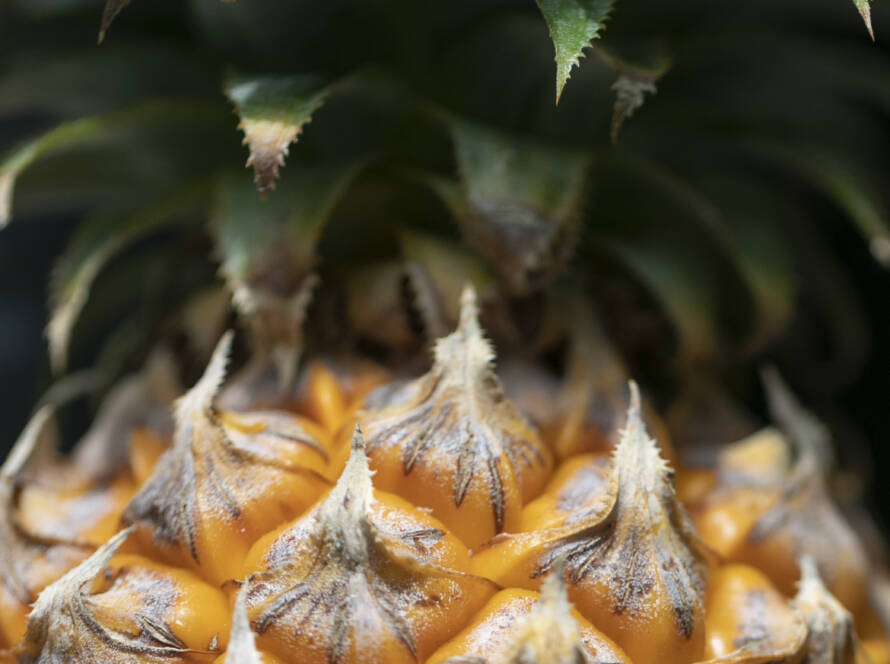Generated by Contentify AI
- Introduction: Exploring the Nutritional Value of Mago and Pineapple
- Nutritional Value of Mago
- Nutritional Value of Pineapple
- Comparison of Mago and Pineapple
- Conclusion: Which is Healthier, Mago or Pineapple?

Introduction: Exploring the Nutritional Value of Mago and Pineapple
When it comes to comparing the nutritional value of fruits, it’s hard to beat the combination of mago and pineapple. Although both fruits are incredibly healthy, they have a few key differences in terms of their nutritional content. Let’s take a closer look to see how these two fruits stack up in terms of their nutritional value.
Calories: Mago is often thought of as a low-calorie fruit, but when compared to pineapple, it surprisingly contains more calories. A single serving of mago provides around 60 calories, while a single serving of pineapple contains just 50 calories.
Vitamins: When it comes to vitamins, both mago and pineapple are excellent sources of vitamin C. Mago contains around 30% of the recommended daily allowance (RDA) of vitamin C, while pineapple contains around 50%. Mago also provides a significant amount of other vitamins, including vitamin A, B vitamins, and antioxidants, while pineapple is an excellent source of vitamin B6 and folate.
Minerals: Both mago and pineapple are good sources of minerals, including calcium, magnesium, iron, and potassium. Mago contains higher amounts of calcium and iron, while pineapple is a better source of magnesium and potassium.
Fiber: Mago is an excellent source of fiber, providing around 5g of fiber per serving. Pineapple is also a good source of fiber, providing around 2g per serving.
Overall, both mago and pineapple are excellent sources of vitamins, minerals, and fiber. Mago has the edge in terms of calories and certain vitamins, while pineapple is a better source of minerals and fiber. Ultimately, which one you choose is up to you and your dietary needs.
Nutritional Value of Mago
When looking at the nutritional value of mago and pineapple, it’s important to note that both of these popular fruits are packed with vitamins and minerals. Both are excellent sources of vitamin C and manganese, but there are some subtle differences between the two.
Mangoes are slightly higher in calories and have more fiber, potassium, vitamin A, and antioxidants than pineapple. Mago is also higher in dietary fiber, which can help to promote healthy digestion. Additionally, they contain many essential vitamins and minerals like potassium, zinc, iron, magnesium, and vitamin B6.
Pineapple, on the other hand, is higher in calcium, folate, and vitamin B1. It’s also lower in calories, fat, and sodium than mangoes. Pineapple is also higher in fructose, which is a type of sugar, so it may be a better option for those looking to reduce their sugar intake.
Both fruits are excellent sources of vitamins and minerals and can be enjoyed in moderation as part of a healthy diet. Both are excellent choices for a snack, in smoothies, or in salads. Try using both in creative ways to take advantage of their nutritional benefits.
Nutritional Value of Pineapple
Pineapple is a tropical fruit that provides a wide range of health benefits due to its unique combination of vitamins, minerals, and other nutrients. It is an excellent source of vitamin C, providing more than 100% of the daily recommended value in just one cup. Pineapple is also a good source of manganese, copper, and other minerals, as well as dietary fiber.
When comparing the nutritional value of pineapple to mango, we see that pineapple is slightly higher in vitamin C, providing more than double the daily recommended value in one cup. Additionally, pineapple contains more dietary fiber than mango, making it a better choice for digestive health.
In terms of minerals, mango provides more calcium, iron, magnesium, and potassium than pineapple. However, pineapple is higher in other minerals, such as manganese, copper, and zinc.
Overall, both of these fruits offer a wide range of vitamins, minerals, and other nutrients that are essential for overall health. While pineapple is higher in vitamin C, manganese, and dietary fiber, mango is higher in other minerals, such as calcium, iron, magnesium, and potassium. Therefore, it is important to consider both fruits when adding variety to your diet for optimal nutrition.
Comparison of Mago and Pineapple
When it comes to comparing Mago and Pineapple in terms of nutritional value, there are some important factors to consider. Mago, also known as mango, is a tropical fruit that is widely consumed around the world. Pineapple, on the other hand, is a common sweet and tropical fruit with a unique flavor. Both fruits are rich in many essential vitamins and minerals, but there are some notable differences between them.
When evaluating the nutritional value of Mago and Pineapple, the most significant difference is in their vitamin and mineral contents. Mago is rich in vitamin A, vitamin C, and potassium, while pineapple is rich in vitamin C, folate, and manganese. Mago also contains more dietary fiber than pineapple, with 7.3g of fiber per 100g of fruit compared to 2.3g of fiber per 100g of pineapple.
In terms of calories, Mago is slightly lower than Pineapple, with 67 calories per 100g compared to 50 calories per 100g for pineapple. Mago also has a higher sugar content than pineapple, with 14.98g of sugar per 100g compared to 11.8g of sugar per 100g for pineapple.
Overall, both Mago and Pineapple are nutritional powerhouses, providing important vitamins and minerals, dietary fiber, and low-calorie sweeteners. While they do have some differences, both fruits are excellent choices for a healthy diet.
Conclusion: Which is Healthier, Mago or Pineapple?
After examining the different nutritional components of mago and pineapple, it’s evident that both fruits provide essential vitamins and minerals. Mago is a powerhouse of Vitamin A, Vitamin C, and Calcium, while pineapple offers a hefty amount of dietary fiber and manganese.
Ultimately, both fruits are incredibly healthy, and it’s hard to say which is more nutritious overall. But if you’re looking for a fruit to help boost your immune system, Mago is the clear winner, while pineapple is ideal for improving gut health thanks to its high fiber content.
Ultimately, it depends on which vitamins and minerals you’re trying to get from your fruit. If you’re looking for a nutrient-rich snack, then both Mago and pineapple are great options. But if you’re trying to target a specific health issue, then Mago may be the better choice for boosting immunity, while pineapple can help improve digestive health.



